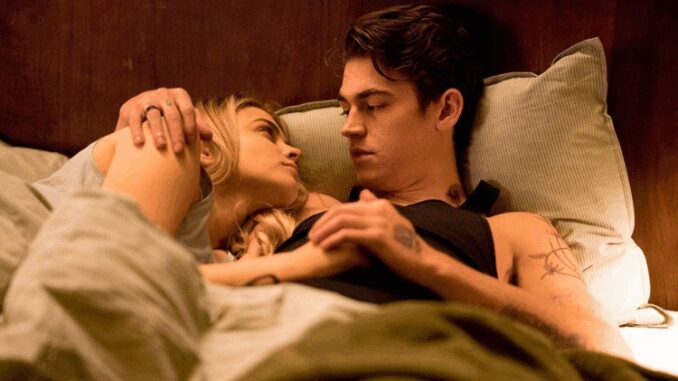
“`html
The After Series. Just the name alone can conjure a range of emotions, from nostalgic teen angst to outright cringing disbelief. For those blissfully unaware, this saga, based on Anna Todd’s popular Wattpad fan fiction (inspired by Harry Styles, naturally), chronicled the tumultuous relationship between Tessa Young, an innocent college freshman, and Hardin Scott, a brooding, tattooed bad boy with a secret heart of gold (or so we were told). Five films later, and with the final installment, After Everything, now streaming on Netflix, it’s time to revisit this controversial cultural phenomenon and ask: why did it resonate so strongly with some, and why did it draw so much ire from others?
A Look Back at the After Phenomenon
The initial allure of the After series lay in its exploration of forbidden romance and the transformative power of love, even amidst chaos. The trope of the “good girl falling for the bad boy” is a classic for a reason, and After capitalized on this with a modern, digital-age twist. Tessa’s character arc, from naive student to independent woman, resonated with many young women navigating their own identities and relationships. The films also offered a visually appealing aesthetic, filled with romantic montages, passionate encounters, and picturesque European locations.
However, the series also faced considerable criticism. The central relationship between Tessa and Hardin was often portrayed as toxic and codependent, with cycles of arguments, breakups, and reconciliations fueled by jealousy, miscommunication, and Hardin’s volatile behavior. Critics argued that this portrayal romanticized unhealthy relationship dynamics and sent a damaging message to young audiences about what constituted acceptable behavior in a relationship. Specific issues included:
- Hardin’s Controlling Behavior: His possessiveness and attempts to dictate Tessa’s choices were often portrayed as romantic, rather than alarming.
- The Cycle of Abuse: The constant emotional rollercoaster created a pattern of highs and lows, mirroring the cycle of abuse.
- Lack of Accountability: Hardin’s apologies often felt hollow, and he rarely faced significant consequences for his actions.
Furthermore, the quality of the writing and acting was frequently questioned, with some finding the dialogue clichéd and the performances unconvincing. Despite these criticisms, the After series maintained a dedicated fanbase, drawn to the emotional intensity and escapist fantasy it provided. The films sparked countless discussions online, dissecting every moment of Tessa and Hardin’s relationship and debating the merits of their choices.
Ultimately, the After series’ lasting impact lies not only in its entertainment value, but also in the conversations it sparked about healthy relationships, consent, and the responsibility of media in shaping young people’s perceptions of love. Whether you loved it, hated it, or simply found yourself morbidly curious, the After series undeniably left its mark on popular culture, forcing us to confront uncomfortable truths about the narratives we consume and the messages they send.
“`
